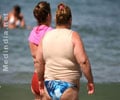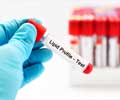Feel the burn: Key signaling pathway that spurs beige fat cells to burn energy identified. The finding reveals a possible target for obesity therapies in humans.

‘Key signaling pathway that spurs beige fat cells to burn energy identified. The finding reveals a possible target for obesity therapies in humans.’





Understanding this communication will be critical to developing therapies targeting beige fat to curb obesity. An additional discovery that nicotine causes the energy-burning process in beige fat, too, could answer questions about associations between weight and smoking.
"This is a very exciting discovery for this pathway. Until recently, we thought this pathway primarily existed in brain cells, the neuromuscular junction, and affected neuronal signaling, and we didn't know it was prevalent in certain fat cells," Zestos said. "It raises all sorts of new questions. Is it the density of the receptors that a person has, or is it the way the receptors are activated, that contributes to one's ability to gain or lose weight? What is the connection between smoking and weight loss or weight gain?" Scientific understanding of beige fat is in its early stages. Many aspects of how the cells function are not yet known. It's only recently that scientists found beige fat cells in human adults and noted their role in burning energy, resulting in improved metabolic health. Beige fat cells help organisms defend against severe cold. As part of the immune response to cold, beige fat gets made by the brown fat mixing with small concentrations of white fat. The new research verifies the CHRNA2 signaling pathway is active when brown fat gets converted into energy to protect against cold. In mice, beige fat allows them to shiver to ward off cold. When the team deactivated CHRNA2 in mice, they weren't able to protect against cold and they gained weight.
The chemistry played a pivotal role in the research. Working with biologists, Zestos measured acetylcholine in the fat cells. Zestos verified that acetylcholine was inducing the pathway. As part of the method developed, Zestos came up with a way to separate the acetylcholine from other fat cells. The next step of the research will be to examine other neurochemicals and their pathways for the roles they could play in activating beige fat cells, as well as to test for possible therapeutics for weight loss and obesity prevention by targeting the CHRNA2 pathway.
Source-Eurekalert















